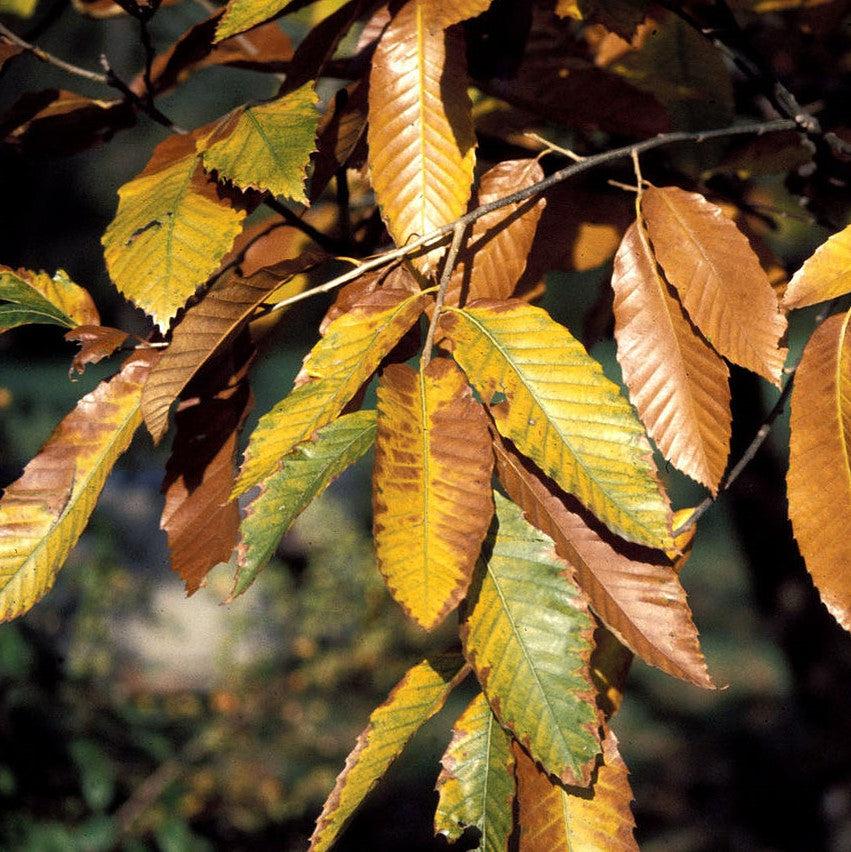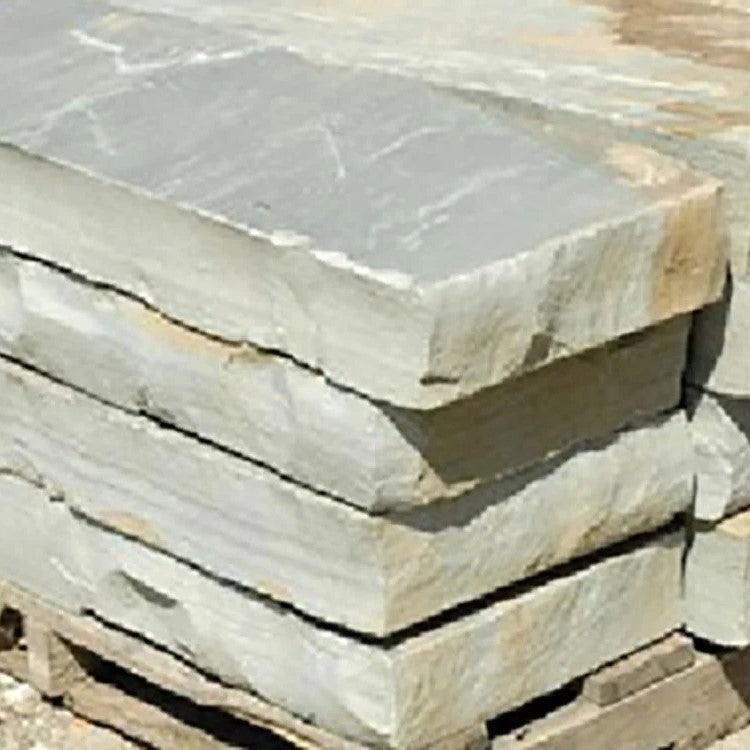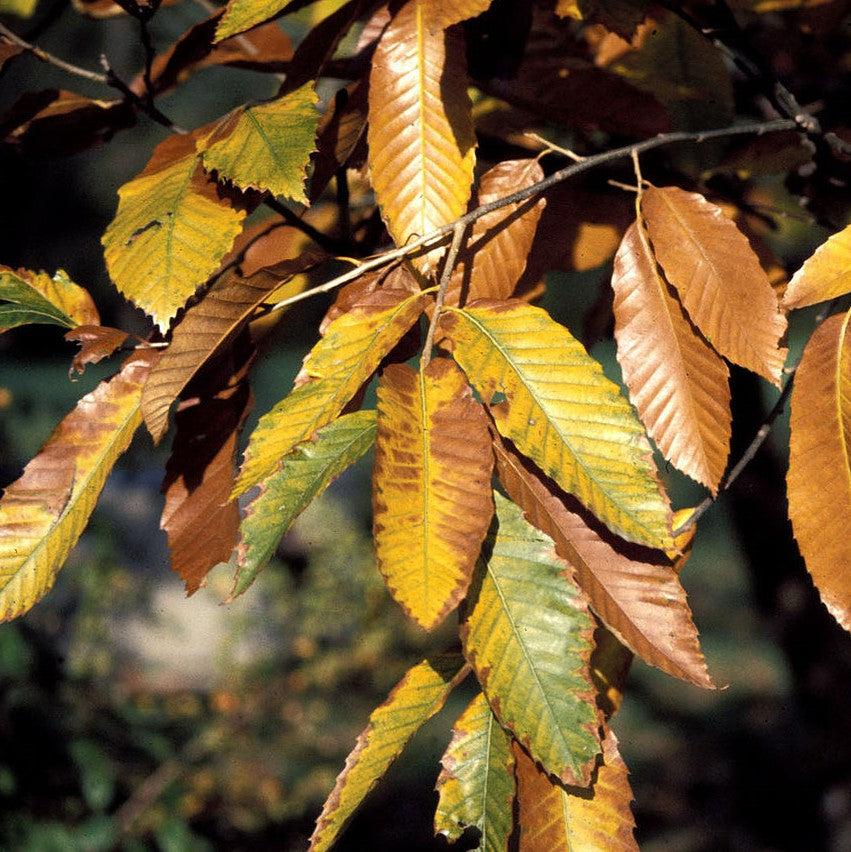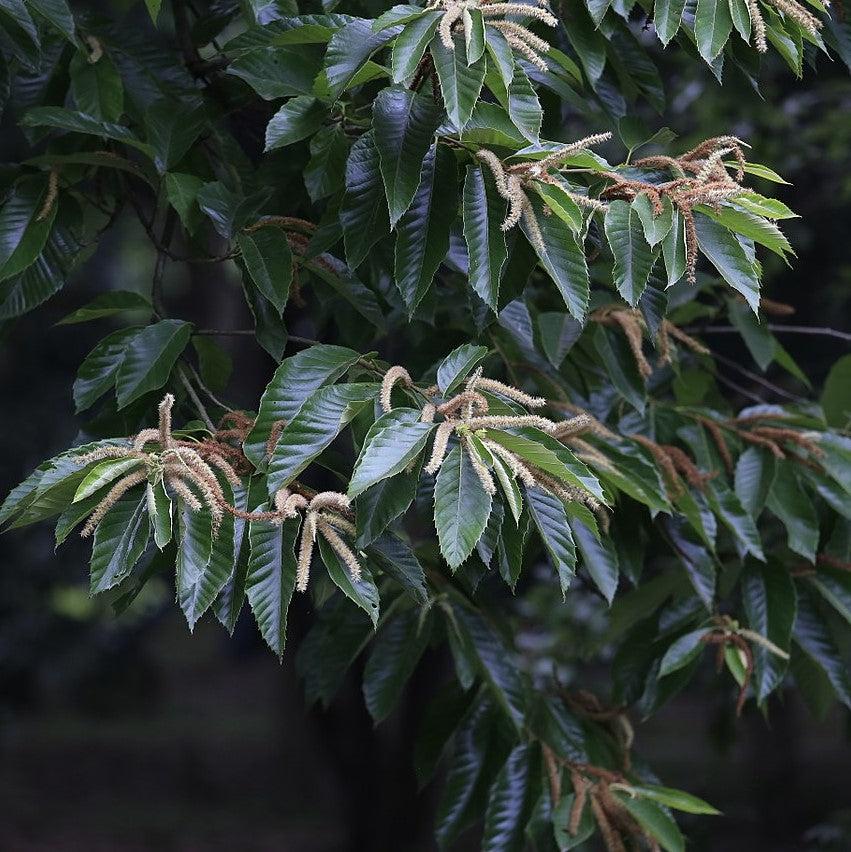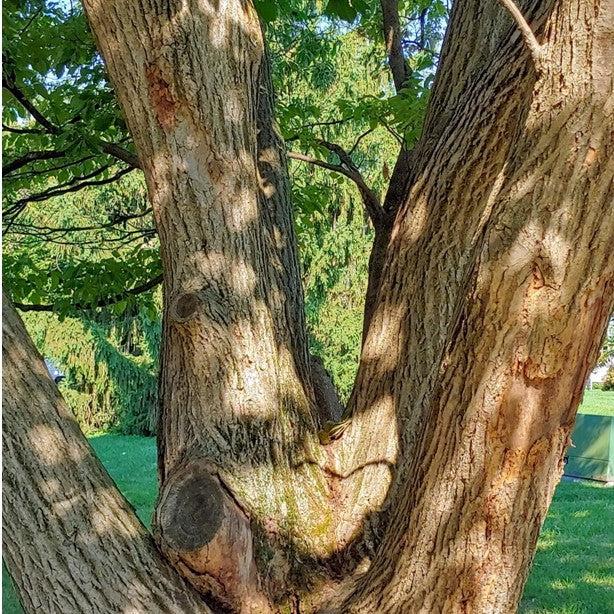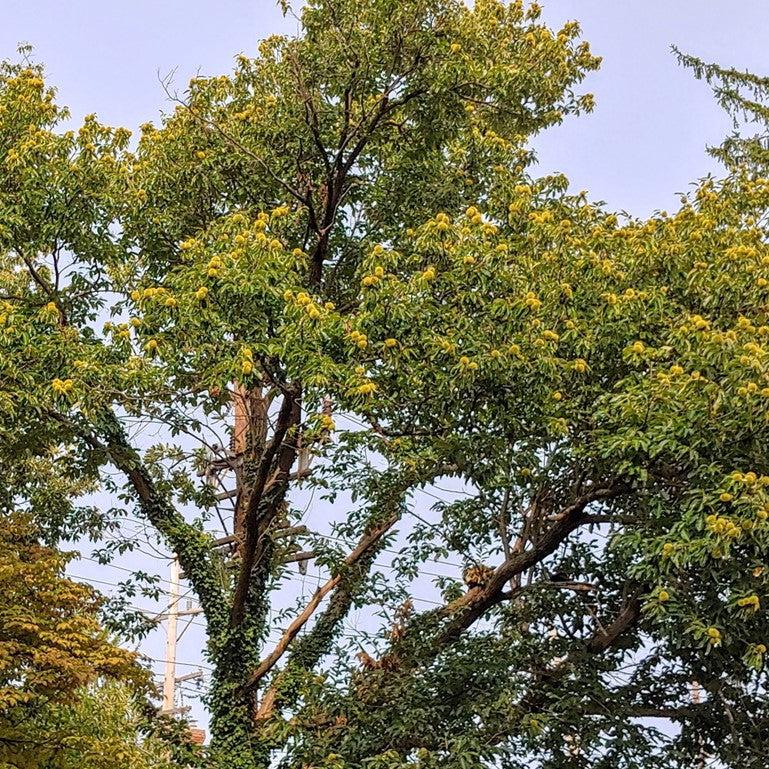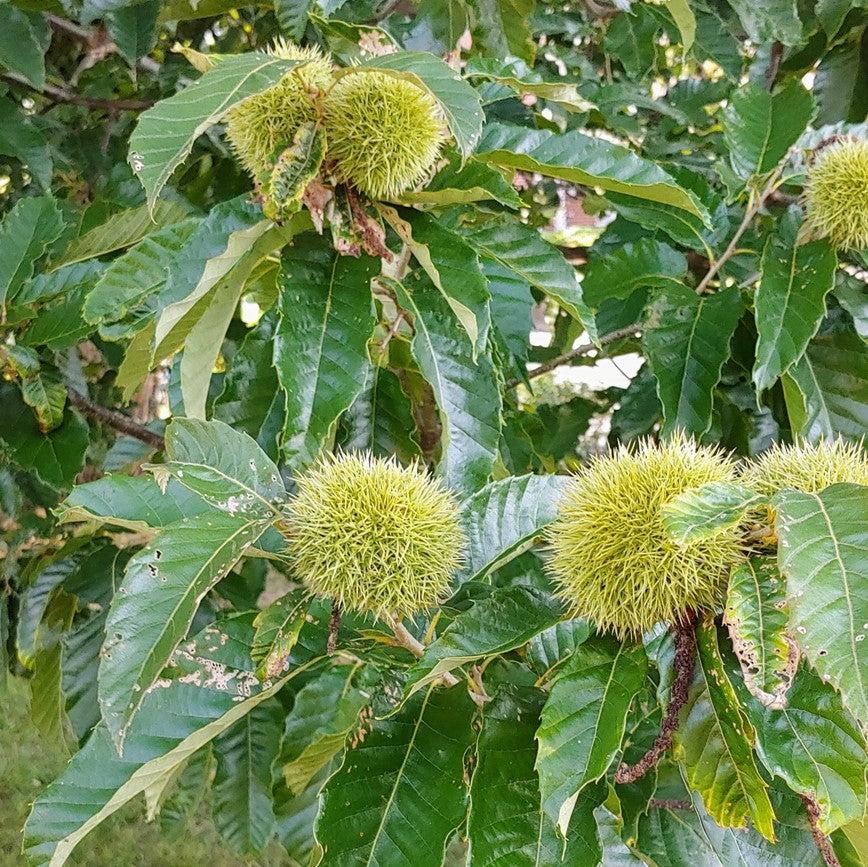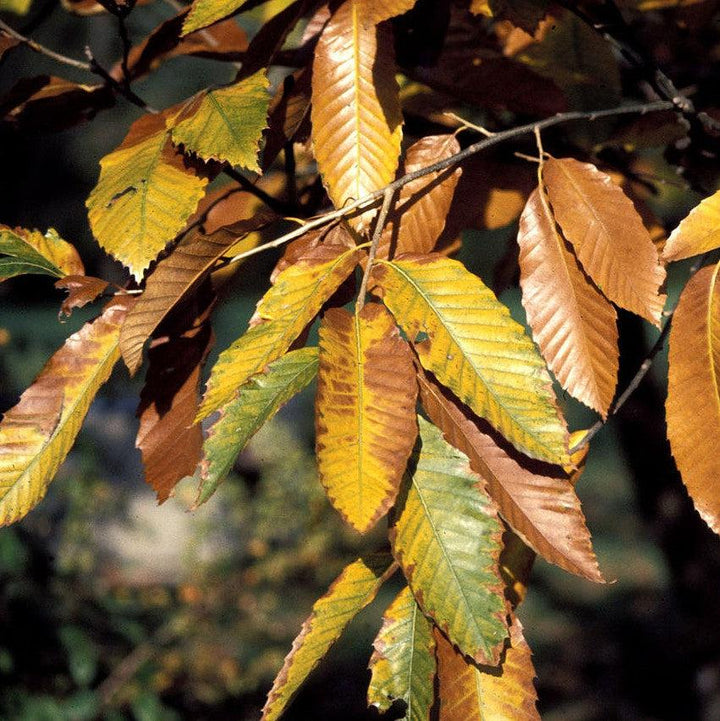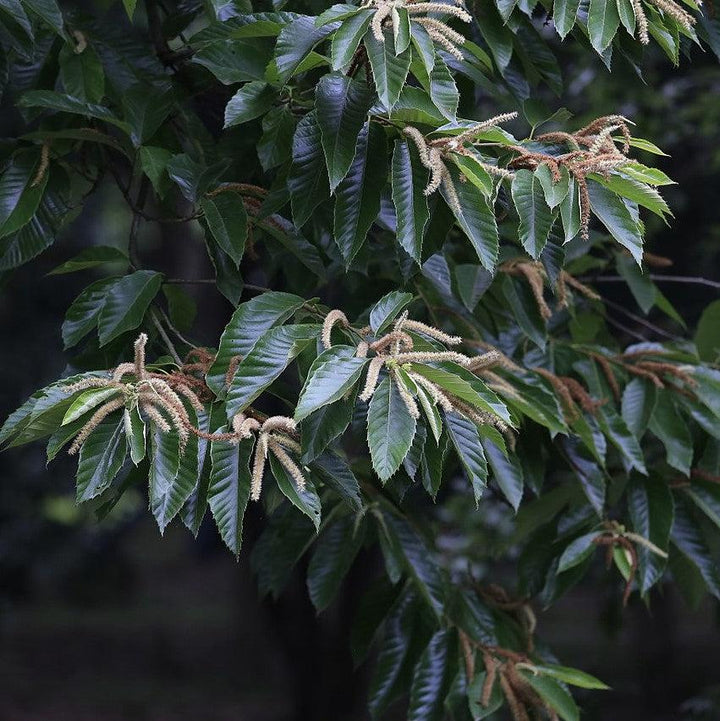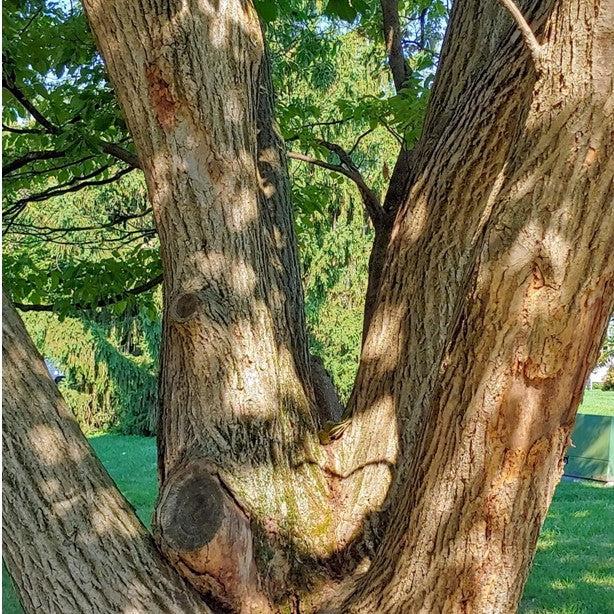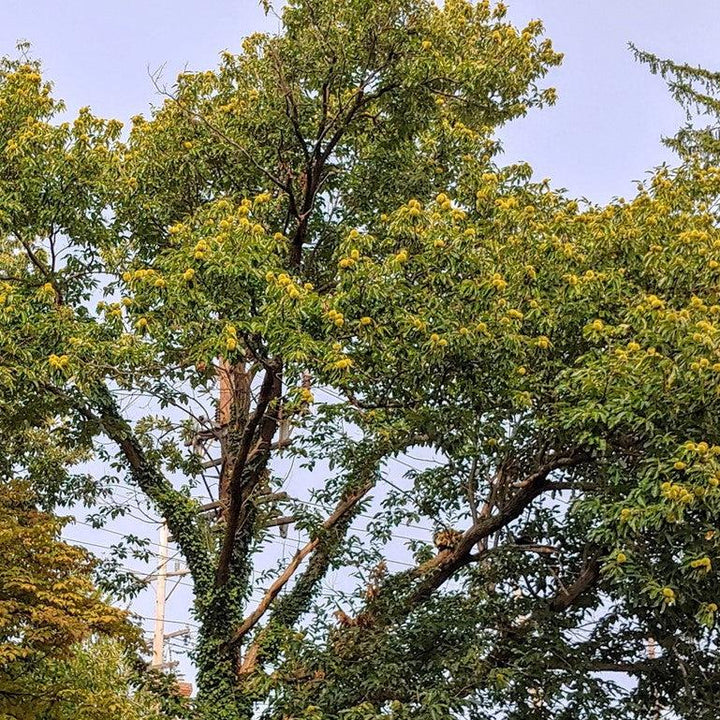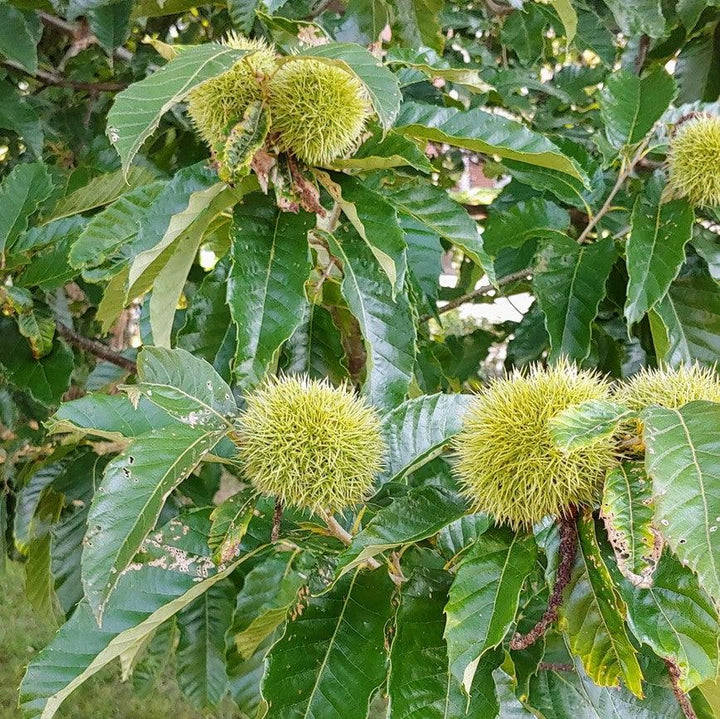Chinese Chestnut is a low branching deciduous tree with edible nuts and bark that becomes furrowed with it age. The long, toothed dark green leaves with lighter undersides turn varying shades of yellow in fall. The showy clusters of creamy spring catkins have an unpleasant smell but are well worth the heavy fall crop of sweet husked nuts. Grows best in full sun and loamy, moist well-drained soils. Tolerates heat, humidity, and drought. Chinese Chestnut is resistant to chestnut blight.
|
Type: |
|
|
Height: |
40’ - 60’ |
|
Spread: |
40’ - 60’ |
|
Spacing: |
50’ |
|
USDA Hardiness Zone: |
4 - 8 |
|
Culture: |
|
|
Bloom Color: |
White |
|
Season of Interest: |
MAINTENANCE NEEDS: Low maintenance. Susceptible to leaf spot, anthracnose, and twig and stem cankers. The spiny nut husks cause significant litter.
LANDSCAPE USES: Specimen planting or mass plantings, Woodland Garden, Naturalized Areas, Native Garden, and Shade Tree.
COMPANION PLANTS: Yellow Birch, Persimmon, Paw Paw
IMAGES: Photoset by Frederick County Forestry Board, 5. Chinese chestnut (Castanea mollissima), Non-native (1),(2)+(3), (2) Zhangzhugang, Castanea mollissima, Hangzhou Botanical Garden 2018.06.03 15-38-49, CC BY-SA 4.0, (3) Kenneth M. Gale, Bugwood.org, Castanea mollissima autumn, CC BY 3.0 US
*As plants have ranges in appearance they may not appear as the images shown.


